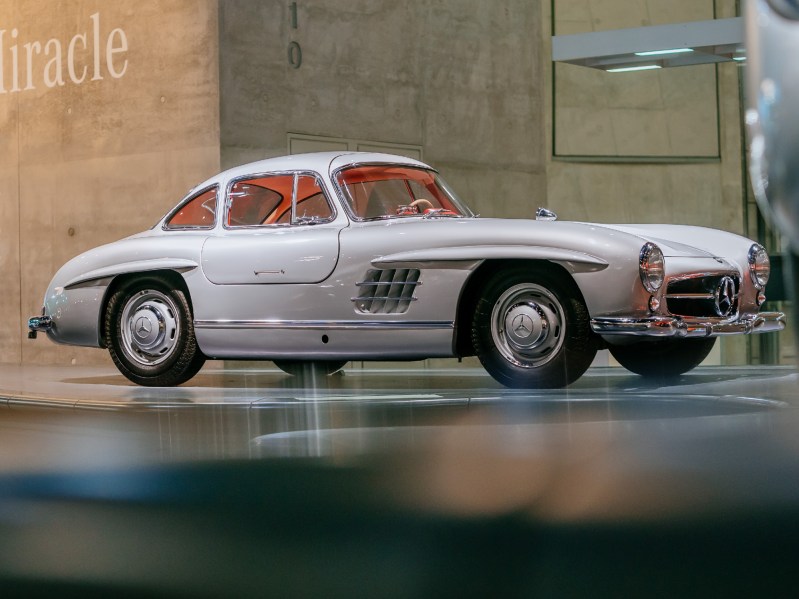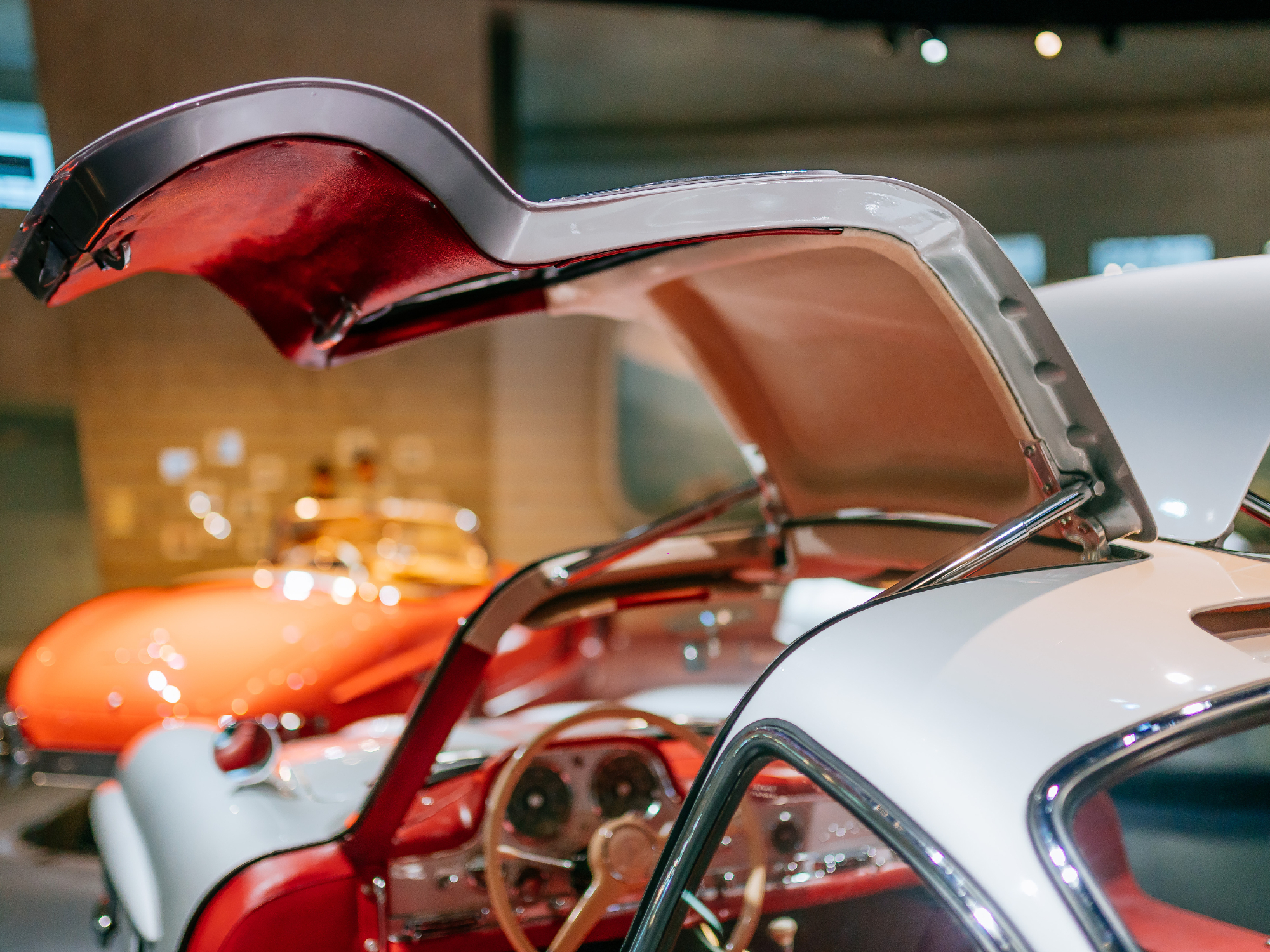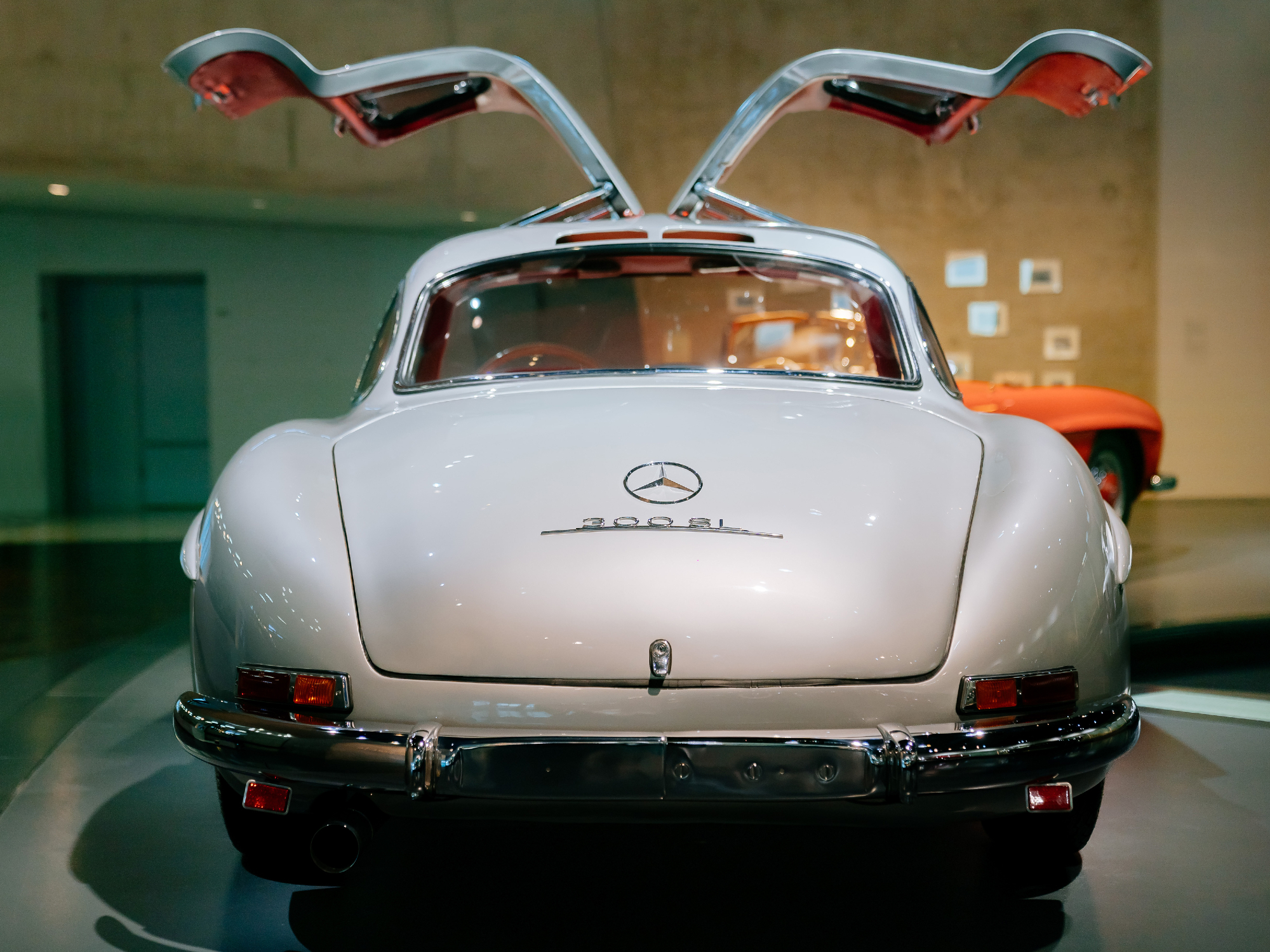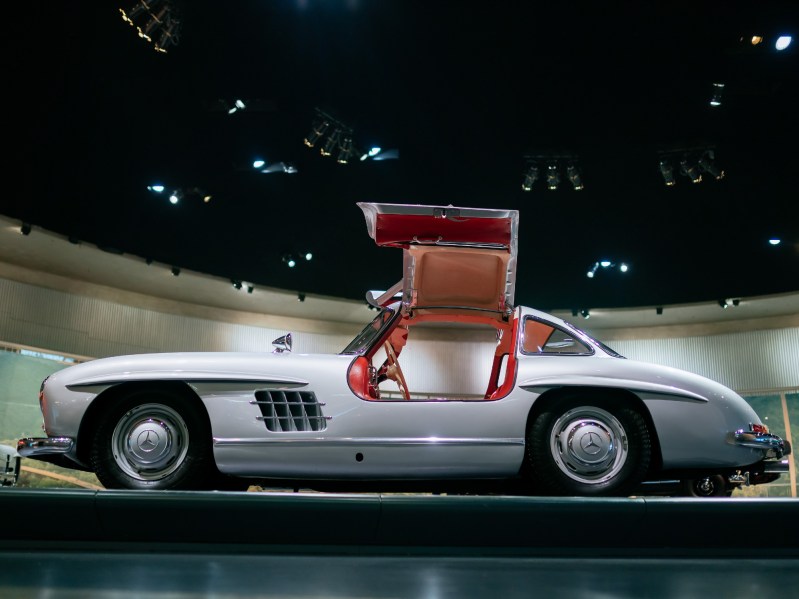
When The International Motor Sports Show opened in New York on February 6, 1954, Mercedes-Benz introduced a new sports coupe that is still one of the most recognized cars ever. The Mercedes-Benz 300 SL Coupe doors opened upward, with hinges on the roof rather than on the door front or rear. This unique feature was later employed on the Delorean DMC-12 in the 1980s, the Mercedes-Benz SLS AMG from 2010 to 2015, and the contemporary Tesla Model X.
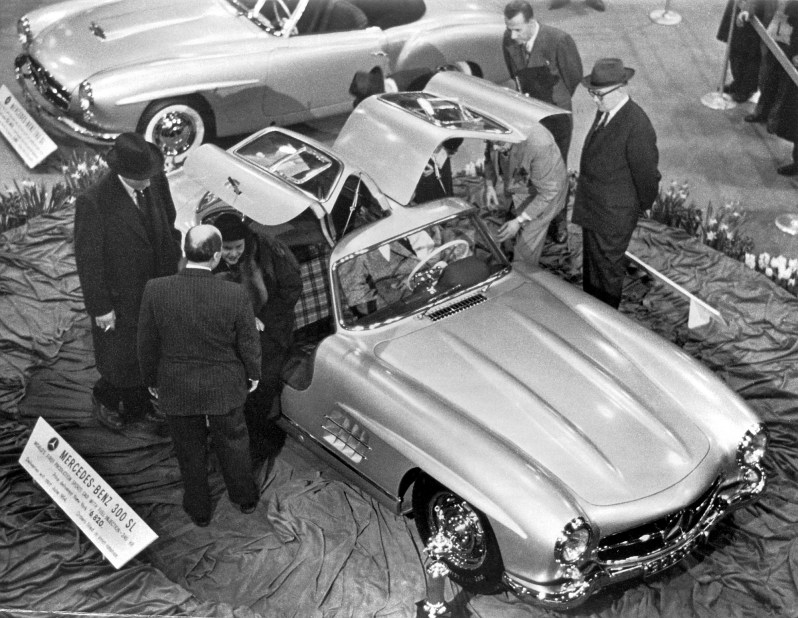
Why the Mercedes-Benz 300 SL Coupe matters
According to the Mercedes-Benz Museum, Mercedes intentionally revealed the 300 SL Coupe along with the 190 SL Roadster, another new car with traditional front-hinged doors, in the U.S. because the automaker built them specifically for the U.S. market. The design with upward-opening doors immediately made an impression on car lovers, who nicknamed it the “Gullwing.” The French thought it looked more like a butterfly and called it “Papillon.”
From 1954 to 1957, Mercedes-Benz produced 1,400 300 SL Coupes. Despite the car’s relatively short production run and low number of units produced, the Gullwing immediately achieved icon status. Any auto enthusiast who saw one on the road probably remembers the experience.
I had a Gullwing sighting in 1991 at Lime Rock Park racetrack in Litchfield, Connecticut. I drove my 1971 VW Karmann Ghia convertible to an event for Car & Driver magazine subscribers to test the new, unusual, short-lived Subaru SVX luxury performance coupe. Another attendee drove his silver Gullwing. I’m sure most of the 50 attendees would have rather ridden in the Mercedes than driven the Subaru- a sprightly car and fun to drive.
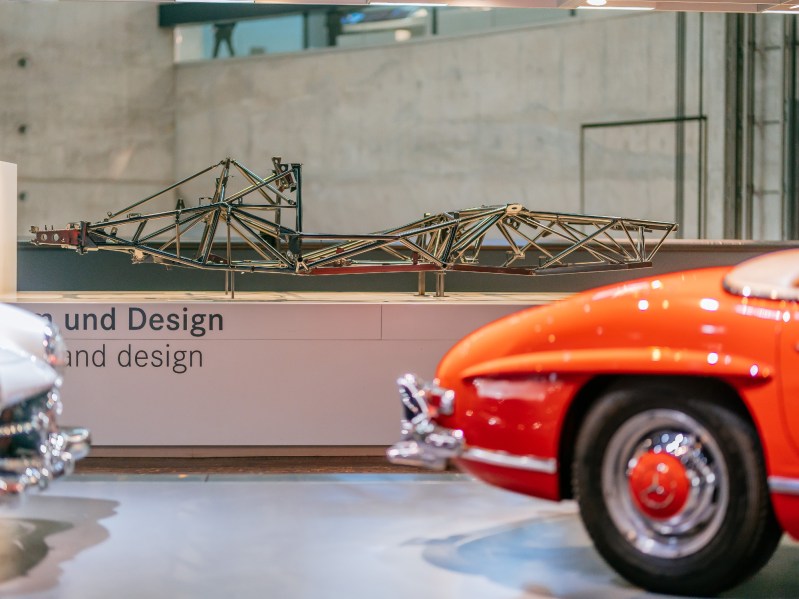
Why the Gullwing’s doors fold up
Upward-opening doors on later cars were a design choice, but that wasn’t the case with the 300 SL Coupe. The production 300 SL’s design was built around the 1952 Mercedes-Benz 300 SL racing car’s spaceframe, which had stunning victories in major sports car races, including the Mille Miglia, Le Man’s 24-hour race, and the Carrera Panamericana. The race car’s lightweight spaceframe extended relatively high on the sides, which made front or rear-hinged doors impossible. Mercedes-Benz describes the gullwing-style doors as an”engineering necessity.”
Getting into and out of the Gullwing was also unusual. The driver had to step over the relatively high side of the car. The steering wheel had a lever that allowed the driver to move it out of the way temporarily for easier access. The vehicle also had removable windows because the doors had no space to lower them.
Performance features of the 1954 300 SL Coupe
The Gullwing’s light spaceframe dictated the door configuration, but that wasn’t the 300 SL Coupe’s only sporting element. The sports car’s six-cylinder motor was the first in the world to use direct fuel injection with a four-stroke engine in a production car. The 300 SL’s engine output is 215 hp, which could drive the vehicle to a previously unheard-of top speed of 155 mph.
Today, the 300 SL Coupe is the most photographed vehicle on display, according to the Mercedes-Benz Museum. Many museum visitors take photos of the car from all angles, but few leave the building without taking at least one photograph as a personal record of the experience.
